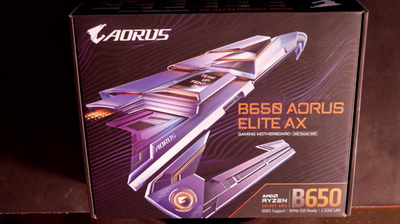
Powerful motherboard: the GIGABYTE B650 AORUS Elite AX (2024)
The GIGABYTE B650 AORUS Elite AX motherboard: initial setup, performance, build quality, and future-proofing.
Introduction
The GIGABYTE B650 AORUS Elite AX is quite a powerful motherboard for a new PC build. It's designed for AMD's Ryzen 7000 series CPUs. Below I elaborate on my experience with the initial setup, BIOS updates, features and design.
Some photos (click to enlarge)
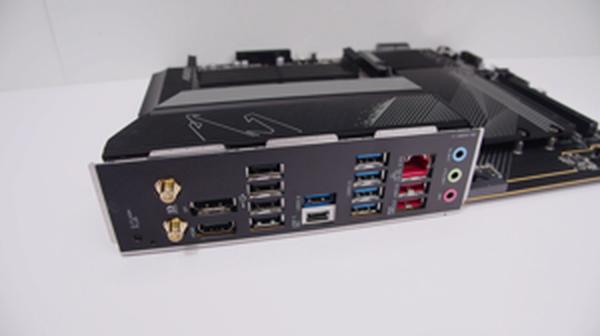
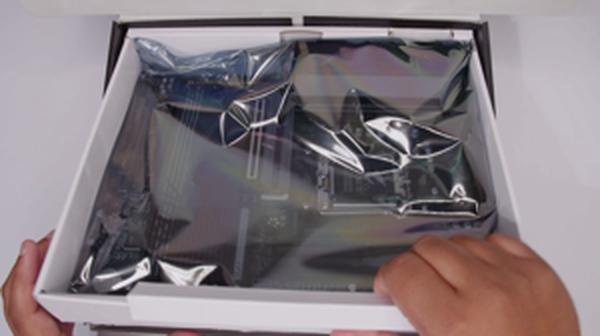
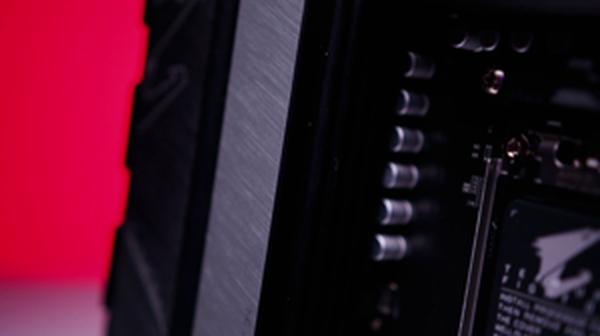
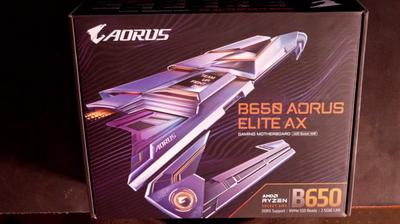
Specs of the GIGABYTE B650 AORUS Elite AX Motherboard
- Release Year
- Brand
- Chipset Type
- Compatible Devices
- Compatible Processors
- Cpu Socket
- Memory Clock Speed
- Memory Storage Capacity
- Model Name
- Platform
- Ram Memory Technology
Prices
Initial Setup and BIOS Update Experience
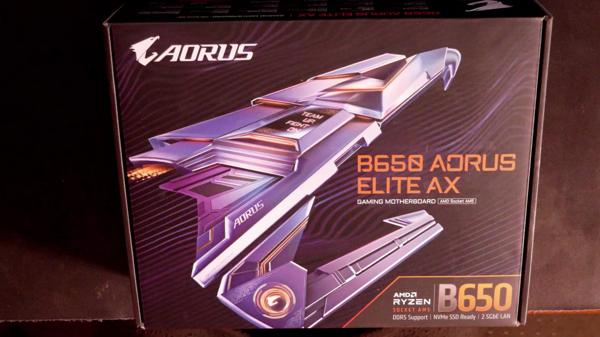
Starting off with the GIGABYTE B650 AORUS Elite AX Motherboard, my first impressions were set high with the promise of a feature-rich board packed with the latest technologies suitable for AMD’s Ryzen 7000 series processors. However, as with any new tech, the initial setup isn’t always smooth sailing and this board was no exception.
Here's a quick rundown of my experience:
Bios Update: The board shipped with the initial F1 BIOS, which wasn't quite up to scratch. Flashing it to the latest Fb3 BIOS was crucial for stability and to access all the RAM capabilities.
Video Output: Initially, there were no signals from the GPU Display-port; a switch to HDMI did the trick before Display-port came alive after a reboot.
WiFi: Straight out of the box, WiFi wasn't functioning, necessitating an update via Ethernet to get things up and running.
While the BIOS update process has been streamlined to a degree, it still feels somewhat outdated that a freshly built system would require such steps before hitting peak performance. I was admittedly a bit frustrated when video outputs weren't working straight away and the need for BIOS updates before everything clicked into place. It was a reminder that building PCs can still be a bit of a journey rather than a destination.
GIGABYTE's Q-Flash Plus is an absolute lifesaver, allowing for a BIOS update without a CPU or memory installed, just by using a USB stick. This feature alone can turn a potential RMA situation into a simple fix, and it's a feature that shouldn't be overlooked.
Yet, with every hurdle crossed, the motherboard has proved itself to be a sturdy piece of kit. The magnetic WiFi antenna is an especially nice touch, sticking to the case and out of the way, something I didn't know I needed but now wouldn't want to go without.
On a side note, the EZ-Latch feature for M.2 and PCIe components, alongside the plentiful USB-C ports, shows a clear consideration for user convenience and future expansion. And although not critical to operation, the absence of an installation guide or necessary screws for mounting was a disappointment - it's these little things that can smooth out the setup experience especially for first timers.
In summary, while the GIGABYTE B650 AORUS Elite AX took some effort to set up properly, the process reminded me the importance of patience and due diligence when building a PC. The hands-on experience, though challenging, has been rewarding with the board delivering excellent performance post initial hurdles.
Performance and Connectivity Options

When it comes to performance and connectivity options, the GIGABYTE B650 AORUS Elite AX Motherboard packs a serious punch, living up to its promise of supporting the latest AMD Ryzen 7000 Series Processors. Straight out the box, you get an array of features designed to supercharge your computing experience:
Twin 14+2+1 Phases with 70A Power Stage Digital VRM Solution for robust power delivery.
PCIe 5.0 support, ensuring future compatibility with the latest GPUs and high-speed storage.
A generous four DIMM slots supporting DDR5 with AMD EXPO and Intel XMP, ready for high-frequency memory modules.
The inclusion of PCIe 5.0 right here is a game-changer, offering insane bandwidth for the latest NVMe drives and GPUs, meaning loading times and data transfers can be lightning-fast. I was also impressed by the implementation of DDR5 compatibility. There's no denying that this is still new tech and can be pricey, but for those who're looking for top-notch speed and performance, it's definitely a worthwhile investment.
It's not just about speed, though. The thermal design ensures that even under heavy loads, the system remains cool, which is vital for long gaming sessions or intense workloads. I was also pleasantly surprised by the board's WiFi 6E and 2.5GbE LAN options, ensuring fast and versatile networking solutions whether wired or wireless.
Now, it's only fair that I also touch on some drawbacks. Despite the easy-to-use EZ-Latch system for M.2 devices, setting things up wasn't without hiccups. I would've loved a more straightforward process—something many other users have also pointed out. And while the audio capabilities are decent, they're not necessarily top of the line, which might not satiate the audiophiles out there.
Furthermore, potential users should bear in mind that the initial BIOS might need an update. This isn't too cumbersome with the Q-Flash Plus feature allowing updates without a CPU, but it's an extra step that could intimidate less tech-savvy users. I also noticed some users have faced issues with Wi-Fi and USB, necessitating driver updates to ensure optimal performance. It's a bit of a mixed bag—a balance between cutting-edge features and the pains of early adoption.
In summary, I'm leaning more on the positive side here, but I acknowledge that the board may have its perks and quirks. During my own build, I had to troubleshoot a bit, but once everything was updated and drivers were in place, it ran like a dream. If you're comfortable with occasional tinkering and updates, the GIGABYTE B650 AORUS Elite AX is a sound choice packed with features designed for longevity and top-tier performance.
Design and Build Quality

Diving straight into the design and build quality of the GIGABYTE B650 AORUS Elite AX motherboard, it's clear that it's a board that aims to impress. The aesthetic appeal is on point with its sleek design that doesn't just look good but also feels solid. Here's a quick rundown:
Twin 14+2+1 phases with 70A power stage for robust power delivery.
8-layer 2X copper PCB to ensure stability and cooling.
Full coverage MOSFET heatsinks integrated with a 6mm heatpipe.
The nifty EZ-Latch system simplifies M.2 and PCIe device installation.
However, it's not all rainbows and butterflies. The lack of included installation screws and a printed manual felt like an oversight for a board in its price range. It's a little hiccup but a bummer nonetheless when you're in the middle of an exciting build.
One standout feature is the board's cutting-edge thermal design, which keeps things chill even when the going gets tough. The 6mm heatpipe, combined with M.2 Thermal Guard and ultra-durable PCIe Armor, not only adds to the durability factor but also ensures that performance isn't throttled by heat issues. Plus, the fact that the included WiFi antenna is magnetic is a small but significant touch, adding to the user-friendly vibe of this mobo.
On the flip side, this board does remind me that looks aren't everything. While visual appeal and solid build quality are important, the initial setup hiccups cannot be ignored—WiFi and video output issues that demanded a bit of trial and error. However, given the post-setup performance, it's been worth the effort.
Regarding drawbacks, while not directly related to design and build, it's crucial to mention that the USB 3.0 pins being bent was a frustrating speedbump. Plus, the absence of an onboard BIOS post code status LED is noticeable if you're used to having one for troubleshooting.
It's still fair to say that GIGABYTE's attention to durability and aesthetics is commendable. Heatsinks are not only functional but also contribute to an imposing look that many gamers and PC builders seek. The PCIe EZ-Latch is a brilliant addition, making hardware swaps effortless—a real highlight in practical design.
To wrap it up, the GIGABYTE B650 AORUS Elite AX hits the right notes with design and build quality, especially if you can overlook some minor misses that can be addressed with future updates or peripheral purchases. The initial hiccups, once sorted, lead to a motherboard that stands strong in both looks and operation—a gratifying base for any PC build.
Future Proofing and Overall Value

Assessing the GIGABYTE B650 AORUS Elite AX motherboard has been a journey of weighing the scales between groundbreaking functionality and the occasional setup hiccup.
When it comes to future proofing, there are significant aspects to consider:
AM5 Platform: It's an investment in longevity, keeping the door open for future AMD CPU upgrades.
PCIe 5.0 and DDR5: Top-of-the-line specs promising faster data transfer and memory speeds.
Ample Connectivity: With USB-C ports front and rear, you're set for all modern peripherals.
However, there are drawbacks that can't be ignored:
BIOS Update Necessity: Requires immediate attention to ensure hardware compatibility.
Initial Setup: Can be daunting for first-timers without more comprehensive guidance.
Despite the initial hiccups during setup and the absence of an installation manual, my personal take leans towards the positives. The wealth of features offers more than just current tech but opens the pathway for future advancements, which is a solid plus in my book.
The five-year warranty provides a comforting safety net for the long haul. But, most appealing is the future-ready mindset encapsulated within the setup – both the AM5 socket confirming Ryzen 7000 series support and the DDR5 compatibility are standout points. The comprehensive power design, reinforced by 70A power stages, lays a stable foundation for rigorous computing tasks. Their thermal management design and the EZ-Latch feature for M.2 and PCIe reflect an intuitive approach to user experience.
On the downside, the initial woes are not trivial. The necessity to update the BIOS to get things up and running isn't ideal – I’d appreciate a more out-of-the-box readiness. Ensuring that the motherboard ships with a current BIOS version could mitigate this. However, once past the update, the motherboard's performance has been solid, and the Wi-Fi setup issues seemed like a one-off inconvenience rather than a systemic flaw.
Navigating around the missing printed manual was an inconvenience. You'd expect all accessories, including the manual and necessary screws, to be provided at this price point. Yet, the trade-off comes in the form of robust build quality, an expansive feature set, and aesthetic design that is bound to keep your build relevant for years to come.
In the world of ever-updating tech, the GIGABYTE B650 AORUS Elite AX stands out as a forward-thinking component. Despite some initial turbulence, once airborne, it soars seamlessly into the sphere of modern computing, and I'm satisfied with it as the central nexus of my setup. With these points considered, the board's value proposition leans heavily on future-proofing and performance potential – key elements for any enthusiast looking to stay ahead of the curve.
Comments (0)
Share